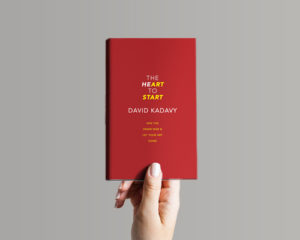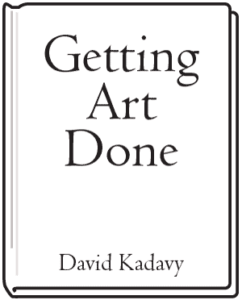Listen to The Heart to Start audiobook free on Audible
The  audiobook version of The Heart to Start is now available on Audible! keep on reading »
audiobook version of The Heart to Start is now available on Audible! keep on reading »

David Kadavy is author of Mind Management, Not Time Management, The Heart to Start & Design for Hackers.
The  audiobook version of The Heart to Start is now available on Audible! keep on reading »
audiobook version of The Heart to Start is now available on Audible! keep on reading »
The Heart to Start is Here credit You’ve heard the advice before: Just get started. If you can follow that advice, you absolutely should. Write your first book. Build your first company. Record your first song. If you’re anything like me, it’s not so easy. You think about everything that could go wrong. You worry it will be a total failure. You can hear everyone laughing at you. Heck, even as I launch this book, I have these same worries.
 OMFG, I’m writing another book. In the course of helping thousands of students learn design, and in the course of my own creative endeavors as an author, designer, entrepreneur, and podcaster, I’ve discovered a problem: keep on reading »
OMFG, I’m writing another book. In the course of helping thousands of students learn design, and in the course of my own creative endeavors as an author, designer, entrepreneur, and podcaster, I’ve discovered a problem: keep on reading »
As I was writing Design for Hackers, I didn’t think the Kindle version would really be worthwhile. So, naturally, I didn’t even think about it as I announced that Design for Hackers was available on Amazon. keep on reading »
7:35 this morning I was awoken by a call from my Publisher, Chris Webb from Wiley. I wasn’t expecting to hear these words any time soon in my life:
keep on reading »

It was less than 10 months ago that I told you that I would be writing Design for Hackers. Less than 10 months, and the book is already available. In fact, I just signed a bunch of books for some of the amazing 138 backers of the Kickstarter campaign, and I’m also packing my bags and going on tour, starting (oxymoronically) with stops in Boston and NYC next week. keep on reading »
While the 00’s are being called a lost decade for the US economy, there’s no doubt that it was a decade of incredible changes in technology, communication, and the way we see the world. I’ve compiled a list of my favorite books that define a decade that was full of exciting changes for the world, as well as for myself. I have to admit that sometimes difficult to separate the enormous personal changes I experienced in this decade – which was a coming of age one for me – from those of the world. Fortunately, they aren’t mutually exclusive. So, here they are: the eight books that define the decade, in an order that seemed intuitive to me. keep on reading »
Remember when I was testing the waters to see if there was interest in a DIYMBA group? Well, there was plenty of interest. Some were more interested than others. Those in the latter group and I started a DIY MBA group. Here’s what it consists of so far: keep on reading »
 Today I am going to share with you my biggest design secret. Well, I think it’s a big secret, anyway – it may not turn out to be that unique at all. It all began when I spent a semester in Italy, studying the origins of typography. I discovered the meticulous geometry and beatiful proportions behind the letterforms of Bodoni, the within the margins of hand-scribed Bibles, and in the architecture all around Italy’s beautiful cities. keep on reading »
Today I am going to share with you my biggest design secret. Well, I think it’s a big secret, anyway – it may not turn out to be that unique at all. It all began when I spent a semester in Italy, studying the origins of typography. I discovered the meticulous geometry and beatiful proportions behind the letterforms of Bodoni, the within the margins of hand-scribed Bibles, and in the architecture all around Italy’s beautiful cities. keep on reading »
UPDATE: Adelle’s site, Fuel Your Creativity, is the winner. Quite appropriately named, and full of great resources and inspiration. Check it out!
 Thanks so much to all who chimed in on the creativity convertition! When I decided to solicit these ideas, I really wasn’t sure if I should expect to hear much of anything outside of my general understanding of creativity, but I really found some useful tips out of it all. Here are the 10 tips (in no significant order) that were 1) my favorite tips, in combination with 2) submitted by someone who invited – or at least attempted to invite, other people to participate. keep on reading »
Thanks so much to all who chimed in on the creativity convertition! When I decided to solicit these ideas, I really wasn’t sure if I should expect to hear much of anything outside of my general understanding of creativity, but I really found some useful tips out of it all. Here are the 10 tips (in no significant order) that were 1) my favorite tips, in combination with 2) submitted by someone who invited – or at least attempted to invite, other people to participate. keep on reading »